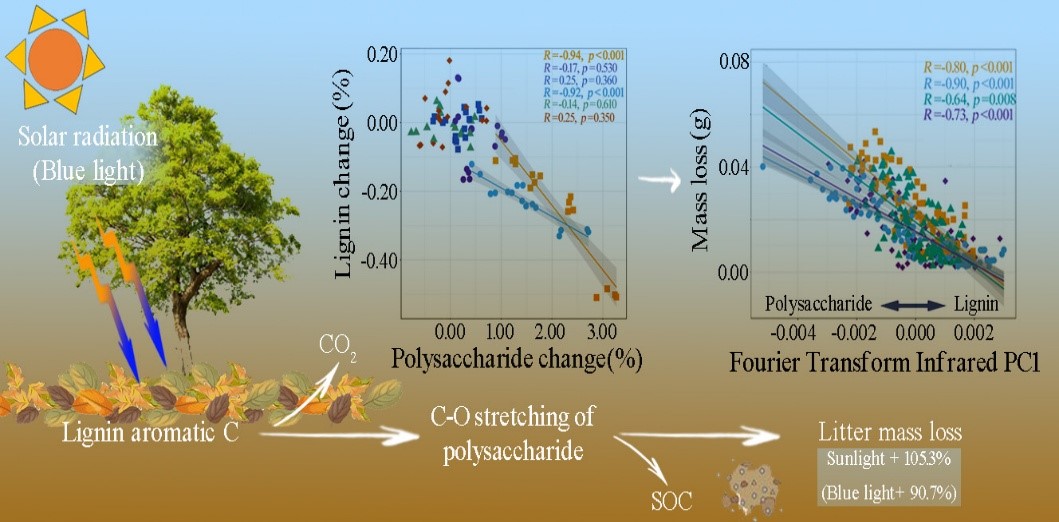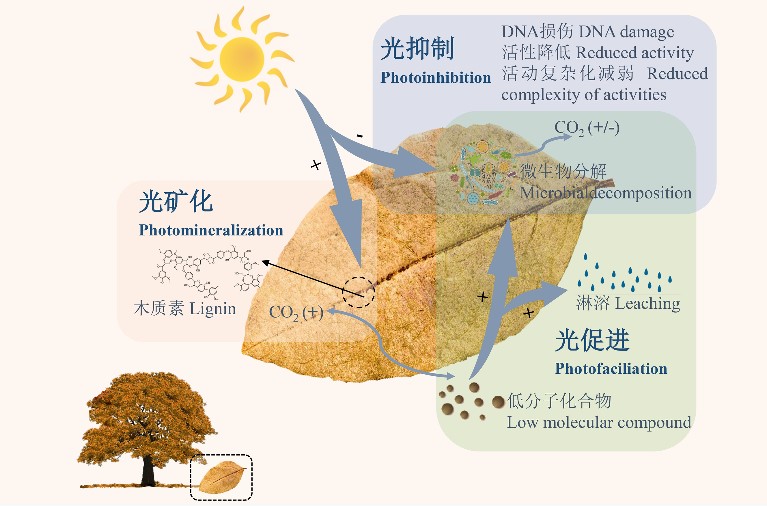Forest Canopy Changes Accelerate Carbon Release Through Light-Driven Litter Decomposition, Studies Reveal
New research has highlighted the crucial role of photodegradation—the process by which solar radiation breaks down organic matter—in forest litter decomposition, a key factor in terrestrial carbon balance and nutrient cycling.
Scientists have found that variations in canopy structure due to natural disturbances or human activities can significantly alter the intensity and spectral composition of sunlight reaching the forest floor, thereby influencing litter decomposition dynamics.
A series of studies led by Dr. WANG Qingwei at the Chinese Academy of Sciences’ Institute of Applied Ecology has uncovered critical mechanisms linking sunlight exposure to litter decomposition rates in temperate forests. While microbial activity traditionally dominates decomposition, sunlight—particularly blue wavelengths—directly alters lignin and other complex carbon compounds in litter, converting them into soluble organic carbon that fuels microbial consumption.
Dr. WANG’s team conducted in-situ experiments using spectral filters to simulate canopy conditions. Their key findings, published in Ecological Processes (Li et al., 2024) and the Journal of Forestry Research (Chang et al., 2025), reveal that changes in leaf fall timing and snow cover—driven by climate fluctuations and human disturbances—can significantly impact carbon cycling in forest ecosystems. Notably, intense solar radiation in the month preceding snow accumulation was found to accelerate carbon turnover in litter the following year, with canopy gaps experiencing a 16-19% increase in carbon release.
Using Fourier-transform infrared spectroscopy, the research team analyzed structural changes in litter carbon (Fig. 1). They found that blue light degraded lignin’s aromatic compounds into soluble molecules, increasing polysaccharide accessibility and thus accelerating microbial processing.
In a review published in the Chinese Journal of Applied Ecology (Zhang et al., 2024), the research team summarized the mechanisms of photodegradation (Fig. 2), its primary drivers—including solar radiation characteristics, litter traits, temperature, moisture, microbial activity, and vegetation cover—and the challenges facing current research in this field. The authors emphasized the need for quantifying interactions between photodegradation and environmental factors, as well as refining traditional carbon turnover models to integrate these dynamics.
The studies warn that intensified canopy disturbances—from logging, storms, or droughts—could amplify photodegradation, destabilizing soil carbon stocks.
This body of research advances our understanding of litter decomposition theory and underscores the importance of photodegradation in forest carbon cycling, particularly in the face of ongoing environmental change.

Figure 1. Photodegradation-Induced Structural Changes in Litter Carbon

Figure 2. Mechanisms of Litter Photodegradation in Forest Ecosystems



